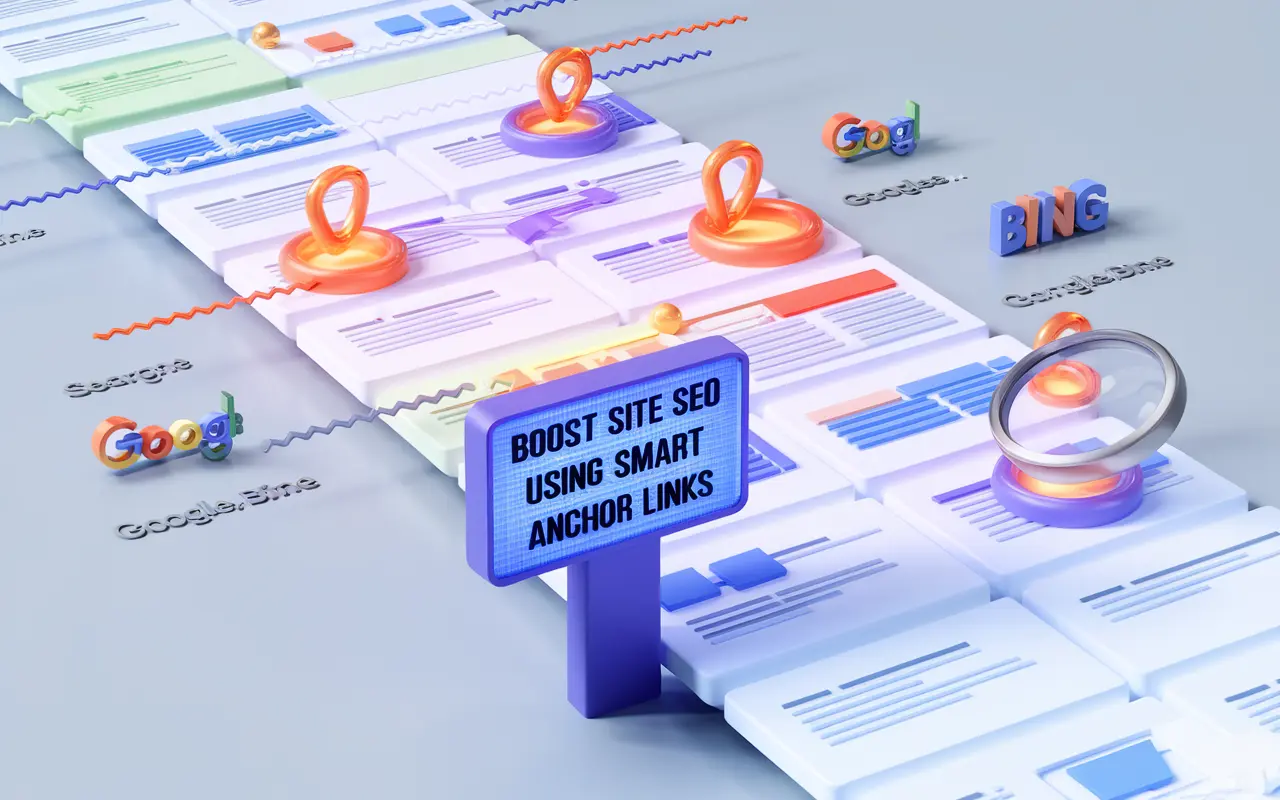Understanding Anchor Links in SEO
An anchor link is a hyperlink that directs users to a specific section within a page or to another page entirely. The visible, clickable text in the hyperlink is known as the anchor text. Anchor links play a pivotal role in both user navigation and SEO strategy. By strategically placing anchor links in your content, you improve accessibility, structural clarity, and search engine crawlability—all of which support higher organic rankings and a smoother user experience.
From a business perspective, effectively using anchor links helps in spreading link equity (also known as link juice), boosts conversions by leading users to critical content faster, and ensures broader keyword coverage across your website’s ecosystem.
Key Takeaway
Anchor links are vital SEO tools that enhance user experience, facilitate better indexing by search engines, and improve site authority by defining content relationships through optimized anchor text.
Why Anchor Links Matter for SEO
Anchor links significantly contribute to SEO on several fronts. They define content context, build relationships between internal pages, and guide search engine crawlers through your site. This translates to a more organized, search-friendly website, leading to improved rankings. Learn more about overall SEO practices at Digidream’s SEO Services.
Benefits of Anchor Links for Business Growth:
- Better Navigation: Anchor links make long-form content easier to explore, improving user experience and time on site.
- Improved Crawlability: Search engines follow anchor links to index pages, improving visibility.
- Increased Keyword Relevance: Optimizing anchor text helps clarify content themes to search engines.
- Stronger Internal Linking Structure: Google understands your site hierarchy and page relationships more efficiently.
Anchor Link Best Practices for SEO Success
To make the most of anchor links, follow these proven best practices:
- Use Descriptive Anchor Text: Instead of generic terms like “click here,” use keyword-rich phrases that describe where the link leads.
- Follow a Logical Site Structure: Place anchor links where users naturally look for additional information.
- Stay Consistent with URL Naming: Ensure anchors lead to correctly named IDs on the page (particularly for same-page jumps).
- Limit Excessive Linking: Overusing anchor links dilutes their importance. Be strategic and avoid redundancy.
- Monitor Anchor Text Variation: Vary your keywords slightly to avoid appearing manipulative to search engines.
How Anchor Links Function in SEO
Anchor links work both at a user-experience and technical level to promote structured, SEO-friendly websites:
1. User Navigation Enhancement:
By linking to headings, FAQ sections, or contact forms on a page, anchor links help users reach relevant information fast—especially helpful in blog posts, guides, and documentation pages.
2. Technical SEO Contribution:
Anchor links improve internal linking structure, helping search engine bots understand the relationship and hierarchy between site elements. This eventually boosts indexation and ranking potential.
Anchor Link Example Table
| Anchor Text | Destination | SEO Benefit |
|---|---|---|
| Learn more about keyword research | /seo/keyword-research | Contextual relevance and internal linking |
| Jump to contact section | #contact | Improved UX and CTR |
| Technical SEO checklist | /seo/technical-seo | Pass of link equity and crawl guidance |
Anchor Link SEO Case Study: How Internal Linking Boosted Organic Reach
The Problem: Fragmented Content With Poor Navigation
A mid-sized eCommerce brand had highly informative blog content, but high bounce rates and low average session durations. Users were struggling to find relevant information on long-form pages.
The Solution: Strategically Implemented Anchor Links
We added anchor links at the top of each guide leading to FAQs, product insights, and related blogs with SEO-optimized anchor text. The links were contextually placed and supported by a sticky TOC (Table of Contents).
The Result: Increased Engagement and Organic Visibility
Within 30 days, the client saw a 24% increase in average session duration, 35% drop in bounce rates, and a 19% lift in long-tail keyword rankings associated with anchor text. Anchor links improved crawl depth and user satisfaction.
Common Anchor Link Mistakes to Avoid
- Generic Anchor Text: Avoid “click here” or “read more.” Use relevant keywords instead.
- Over-optimization: Repeating exact-match keywords in anchor text may signal spam to Google.
- Broken Anchor Destinations: Linking to non-existent sections or pages disrupts the user journey and damages SEO.
- Neglecting Mobile UX: Anchor placements on mobile must be easily clickable and scroll-friendly.
Related SEO Terms You Should Know
- Internal Linking: The strategic linking of one page to another within the same domain to facilitate navigation and SEO benefit.
- Anchor Text: The clickable text part of a hyperlink, crucial for SEO context.
- User Experience (UX): The overall usability and satisfaction a user experiences on your website.
FAQs About Anchor Link
An anchor link directs users to a specific spot within the same page rather than another page entirely. It’s commonly used in long content or documentation pieces for easier navigation.
Yes, anchor links help SEO by improving internal linking, guiding search engines, increasing keyword relevance, and enhancing user engagement metrics like time-on-page.
You create an anchor link by assigning an ID to an HTML element and linking to it using the #ID in the href attribute. Example: <a href="#faq">Jump to FAQ</a>.
Absolutely. Anchor links help users quickly access relevant sections of content, especially on long pages, thereby improving readability and satisfaction.
Using the same anchor text repeatedly can appear manipulative to search engines. Vary your wording while staying contextually relevant.
Conclusion: Leverage Anchor Links for Smarter SEO
Anchor links are more than simple shortcuts—they’re strategic SEO elements that improve internal link structure, enhance user experience, and support keyword rankings. By adopting best practices and avoiding common mistakes, your site can benefit from better visibility and engagement. Ready to enhance your SEO strategy? Start implementing anchor links across your content or learn more at Digidream’s SEO hub.





